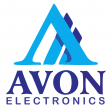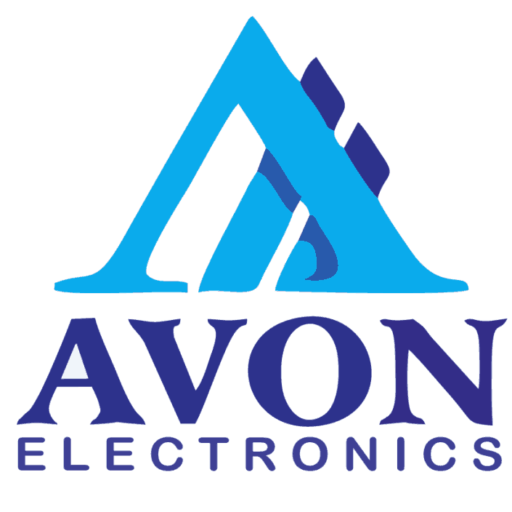Subtotal: ₹59770
Coastal Shifts San Diego news Reflects Surging Tech Sector & Economic Optimism Leave a comment
- Coastal Shifts: San Diego news Reflects Surging Tech Sector & Economic Optimism
- The Rise of Tech and its Economic Impact
- Biotech’s Expanding Footprint
- The Startup Scene: Innovation and Disruption
- Real Estate Trends and Housing Affordability
- Impact of Rising Costs on Local Workforce
- Infrastructure Challenges and Improvements
- Looking Ahead: Opportunities and Challenges
- Sustainability Initiatives and Environmental Concerns
- The Future of Work and Education
Coastal Shifts: San Diego news Reflects Surging Tech Sector & Economic Optimism
The vibrant city of San Diego is undergoing a significant transformation, largely fueled by a surging tech sector and a palpable sense of economic optimism. Recent developments and trends reflected in san diego news point to a dynamic shift in the region’s economic landscape, moving beyond its traditional strengths in tourism and defense. This evolution is attracting a skilled workforce, spurring innovation, and reshaping the city’s identity.
The increase in tech companies establishing a presence in San Diego, coupled with a thriving startup ecosystem, is driving unprecedented growth. This influx of innovative businesses isn’t just about job creation; it’s about cultivating a culture of entrepreneurship and attracting investment from across the globe. The repercussions of this economic boom are felt across numerous sectors, from real estate and retail to education and healthcare.
The Rise of Tech and its Economic Impact
San Diego’s appeal as a tech hub stems from a combination of factors, including a temperate climate, access to top-tier universities like the University of California, San Diego, and a relatively affordable cost of living compared to other major tech centers. This has led to companies specializing in biotechnology, software development, and wireless communications flocking to the area. The concentration of highly skilled professionals is a key differentiator for San Diego, setting it apart from other potential locations.
This growth attracts venture capital, creating a positive feedback loop that further fuels innovation and expansion. Local businesses are benefitting from the increased demand for goods and services, and the overall economic health of the region is improving. However, this rapid expansion also presents challenges, such as managing traffic congestion and addressing the growing demand for affordable housing. The local government is actively working to mitigate these challenges through infrastructure investments and policy initiatives.
| Biotechnology | 12.5% | 5,200 jobs |
| Software Development | 15.8% | 7,800 jobs |
| Wireless Communications | 9.2% | 3,500 jobs |
| Tourism | 4.7% | 2,100 jobs |
Biotech’s Expanding Footprint
The biotechnology industry continues to be a major economic engine for San Diego, with numerous companies engaged in cutting-edge research and development. The presence of institutions like the Salk Institute and Scripps Research further strengthens the region’s position as a global leader in life sciences. Investments in genomic research and personalized medicine are pushing the boundaries of what’s possible, attracting significant funding and creating highly skilled jobs. This sector’s growth is particularly noteworthy due to its long-term potential for innovation and positive societal impact.
The success of San Diego’s biotech industry is reliant on a collaborative ecosystem that connects researchers, entrepreneurs, and investors. Government support through grants and tax incentives also plays a vital role in fostering innovation. However, maintaining this momentum requires addressing challenges such as the high cost of laboratory space and the need for a skilled workforce. Continued investment in education and infrastructure is crucial to ensure that San Diego remains at the forefront of biotechnological advancements.
The Startup Scene: Innovation and Disruption
San Diego’s startup scene is thriving, with a growing number of entrepreneurs launching innovative companies across a diverse range of industries. The city’s supportive ecosystem, which includes incubators, accelerators, and angel investors, provides startups with the resources they need to succeed. This influx of new businesses is driving economic growth and creating job opportunities. Specifically, the focus on cleantech and sustainable solutions is representing significant investment trends.
Access to funding is critical for startups, and San Diego is benefiting from increased venture capital activity. The proximity to Silicon Valley also facilitates connections with investors and potential partners. However, navigating the challenges of startup life, such as competition and market uncertainty, requires resilience, adaptability, and a strong business plan. Mentorship programs and networking events can provide valuable support to entrepreneurs at all stages of their development.
Real Estate Trends and Housing Affordability
The economic boom has had a significant impact on the real estate market in San Diego, driving up property values and rental rates. The demand for housing is outstripping supply, creating challenges for residents, especially those in lower-income brackets. This situation demands innovative solutions to address the housing affordability crisis, including density bonuses, streamlined permitting processes, and the development of more affordable housing units. The local government is exploring a range of policies to address this critical issue.
Community stakeholders need to engage in constructive dialogue to find sustainable solutions that balance growth with affordability. Focusing on transit-oriented developments, utilizing underutilized land, and incentivizing the construction of accessory dwelling units are among the strategies being considered. Addressing the housing crisis is not just an economic imperative; it’s essential to preserving the diversity and inclusivity of the San Diego community.
- Increased demand for housing is driving up property values.
- Rental rates are rising, making it difficult for many residents to afford living in San Diego.
- The supply of affordable housing is insufficient to meet the growing demand.
- Innovative solutions are needed to address the housing affordability crisis.
Impact of Rising Costs on Local Workforce
The high cost of living in San Diego is posing a challenge for attracting and retaining talent, particularly in industries that don’t pay exceptionally high wages. Teachers, nurses, and first responders are all struggling to afford housing in the communities they serve. This trend could have serious consequences for the long-term health of the local economy and the quality of life for all residents. Employers are beginning to adopt creative strategies, such as offering housing assistance programs, in an attempt to attract and retain workers.
Addressing this issue requires a multi-faceted approach that includes increasing the supply of affordable housing, raising wages, and providing transportation assistance. Collaboration between the public and private sectors as well as community organizations is vital to finding solutions that meet the needs of all stakeholders. Failure to address this challenge could lead to a workforce shortage, which could stifle economic growth and undermine the quality of essential services.
Infrastructure Challenges and Improvements
The rapid population growth and economic expansion are putting a strain on San Diego’s infrastructure, including its transportation network, water supply, and energy grid. Traffic congestion is already a major problem, and the demand for water is increasing as the region becomes more densely populated. Investments in infrastructure are essential to support future growth and maintain the quality of life for residents. Prioritizing sustainable infrastructure projects that reduce environmental impact and promote efficiency is crucial.
The local government recognizes the need for significant infrastructure improvements and is pursuing a variety of projects, including widening highways, expanding public transportation, and investing in water conservation technologies. Funding these projects requires a combination of local, state, and federal resources. Engaging the community in the planning process is also important to ensure that infrastructure investments align with the needs and priorities of residents.
Looking Ahead: Opportunities and Challenges
San Diego is poised for continued growth and prosperity, but facing future opportunities and challenges will require proactive planning and strategic investment. The region’s thriving tech sector, strong research institutions, and attractive quality of life position it well for success in the 21st century.
| Housing Affordability | Increase housing density, streamline permitting. | 5-10 years |
| Traffic Congestion | Expand public transportation, improve infrastructure. | 10-15 years |
| Water Supply | Invest in water conservation, explore desalination. | Ongoing |
- Sustain economic growth by supporting innovation and entrepreneurship.
- Address the housing affordability crisis through creative solutions.
- Invest in infrastructure to support future growth.
- Promote sustainability and environmental stewardship.
Sustainability Initiatives and Environmental Concerns
San Diego is committed to sustainability and environmental stewardship, recognizing the importance of protecting its natural resources. The city is implementing a variety of initiatives to reduce greenhouse gas emissions, conserve water, and promote renewable energy. However, the effects of climate change, such as rising sea levels and more frequent wildfires, pose a significant threat to the region. Adapting to climate change will require proactive planning and investment in resilience measures.
Community engagement is crucial to building a more sustainable future for San Diego. Educating residents about the importance of environmental conservation and encouraging them to adopt environmentally friendly practices are vital steps. Support for local businesses that prioritize sustainability – especially those that reduce plastic consumption and carbon footprints – can make an impact. Collaborating with regional, national, and international partners is important to address global environmental challenges.
The Future of Work and Education
The nature of work is changing rapidly, and San Diego must adapt to ensure that its workforce is prepared for the jobs of the future. Investing in education and training programs that focus on skills in demand, such as data science, artificial intelligence, and cybersecurity will be essential. Fostering partnerships between educational institutions and industry is vital to ensure that curriculums are aligned with the needs of employers. Lifelong learning will be critical for workers to remain competitive in a rapidly evolving job market.
Access to affordable education and training is essential for all residents, regardless of their socioeconomic background. Creating pathways to opportunity for underrepresented groups is also important to ensure that everyone has a chance to succeed in the new economy. Investing in early childhood education and providing support for students from disadvantaged backgrounds are crucial steps towards building a more equitable and prosperous future for San Diego.


 IFB 6 kg Fully Automatic Front Load Washing Machine with In-built Heater White (Elena Aqua VX)
IFB 6 kg Fully Automatic Front Load Washing Machine with In-built Heater White (Elena Aqua VX)  OPPO A31 (Mystery Black, 64 GB) (4 GB RAM)
OPPO A31 (Mystery Black, 64 GB) (4 GB RAM)  OPPO F15 (Lightening Black, 8GB RAM, 128GB Storage)
OPPO F15 (Lightening Black, 8GB RAM, 128GB Storage) 